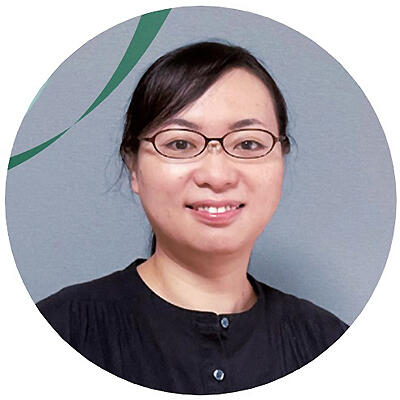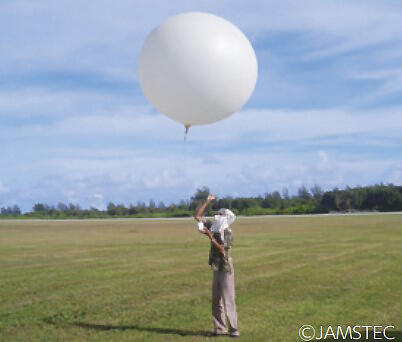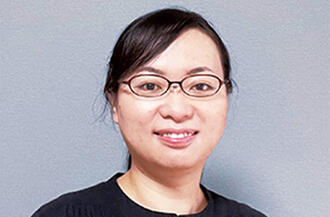
Q1. What are you interested in?
A1: I am interested in technologies that measure the Earth.
Since I was a junior high school student, I have been interested in drawing "radio weather maps" where I listen to the radio and draw a weather map, and general science. In the faculty of science at my university, I learned how to use technology that measures the earth using the Global Navigation Satellite System (GNSS) including the Global Positioning System (GPS). When measuring an object's position using GPS, the presence of water vapor appears as a numerical error. After learning that it is possible to measure the fluctuation of water vapor by utilizing this error, I moved from geodesy to the world of meteorology and entered a master's course.
I wanted to continue my research, but partly because of the problem of school fees, I did not advance to a doctoral program and entered the workforce. After this, I came across a public recruitment call for research support staff and moved to a role at the Japan Agency for Marine-Earth Science and Technology. I learned that there was a way to obtain a doctoral degree by submitting a research dissertation to a university without going through a doctoral course, and even now, I continue my research while balancing my work.
Q2. What are you currently working on?
A2. I am aiming to propose a new technology that opens up the world of low-tech meteorological observation.
Meteorological observation is thought to involve high-tech measurements using satellites or other devices, but in reality, low-tech technology is still mainstream. Balloons called "radiosondes" with sensors that can measure temperature, humidity, and wind direction, among others, are flown twice per day at the same time. Old-fashioned observation methods that receive data by altitude are still practiced worldwide.

The technology for observing the amount of water vapor by GNSS, which I encountered in college, has now been established and is being used for weather forecasting; however, I am conducting research on whether it can be advanced further. This technology uses the time lag (delay) caused by atmospheric water vapor and temperature before receiving radio waves sent from satellites on the ground. However, since this delay differs depending on the make-up of the atmospheric, I think that it might be possible to measure the "vertical structure of the Earth's atmosphere" by combining data. If GNSS enables observations like radiosondes, it could be possible to measure atmospheric structures with car navigation systems and smartphones.
Q3. How do you envision yourself 10 years from now?
A3. I want to be a person who plays a role in connecting observation sites and researchers.
If carbon dioxide emissions are not reduced, global warming and abnormal weather will continue to progress. To adapt to these changes, daily observational data is important. In the future, we wish to improve technologies to enable more accurate data to be collected and analyzed in a rapid and accurate manner.
I arrived at my current position at a private company after working as a research supporter. When I was a supporter, I stayed on board a ship and on a remote island, gaining experience as a behind-the-scenes supporter of meteorological research and its activities. Now that I have become a researcher, that experience has been extremely useful. Research cannot be conducted alone. Every day I realize that I will need to proceed while engaging in discussions with the help of those around me.
It is easy for us to think of ourselves as having a "colorful" background or making many detours on our paths, and I believe you could even say that about me. However, I do not think that all of those experiences were a waste; I was able to understand the true nature of the business of "research." I would like to create a system where anyone who wishes to pursue research can take on challenges regardless of age or career history.


Mikiko Fujita
Marine Research and Development Organization
Profile
Deputy Chief Investigator, Global Environment Division.
She completed her first-term doctoral program at the University of Tsukuba Graduate School.
She became full-time staff for the Marine Research and Development Organization, research and technology, as well as a specialized researcher with a private company.
Received a Ph.D. in Science from the University of Tsukuba Graduate School.
She has occupied her current position since 2021, after being a Marine Research and Development Organization Technical Researcher.
She became an Emergent Researcher in 2021.




